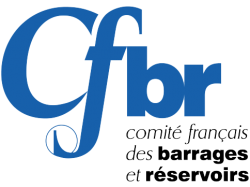doi_cfbr_colloque2019_b24
Justification des barrages poids-voûtes en BCR – deux cas d’application
Mathieu ROY, Geoffrey MATHIEU, Frédéric ANDRIAN (ARTELIA), Stéphane FRAY, Vincent BOINAY, Jean-Christophe GIRARD (TRACTEBEL ENGINEERING)
Éditeur : Comité Français des Barrages et Réservoirs - CFBR - ISBN 979-10-96371-09-9
Colloque : Justification des barrages : état de l’art et perspectives - Chambéry, France
Année d’édition 2019
Téléchargement : Actes du colloque
Title : Verification of RCC arch-gravity dams – Two case studies
Résumé
La stabilité d’un barrage poids-voûte en BCR repose en grande partie sur l’effet d’arc. Le monolithisme du barrage doit donc être assuré en toute situation. Cependant, les contraintes thermiques de traction induites par refroidissement après hydratation du ciment et les mouvements en situation sismique peuvent être de nature à ouvrir les joints, déclencher des fissures et mettre en cause la stabilité du barrage. Des modèles numériques 3D sont donc élaborés afin d’évaluer ces phénomènes et de concevoir des dispositions constructives adaptées.
Un calcul thermo-mécanique du barrage de Janneh (Liban) a été réalisé par ARTELIA afin de simuler le comportement de l’ouvrage depuis le début de la construction jusqu’à 30 ans après la première mise en eau. Le modèle 3D non-linéaire prend en compte le programme de construction, la génération de chaleur par hydratation du ciment, le durcissement progressif du béton, les cycles annuels de marnage liés à l’exploitation du barrage et l’évolution saisonnière de la température de l’air et de l’eau. Les résultats permettent notamment d’optimiser le nombre et le traitement des joints de dilatation et d’ajuster la position du rideau de drainage.
La deuxième partie de l‘article s’intéresse à un barrage en cours de construction en Asie du Sud-Est. Ce barrage, d’abord conçu en barrage poids, a été modifié en barrage poids-voûte pour reprendre les sollicitations sismiques, importantes dans la région. Le comportement du barrage et de l’effet voûte en situation sismique est évalué à l’aide d’un modèle 3D, en recourant à une méthode pseudo-dynamique de modélisation de l’interaction sol-structure et de certains effets non linéaires, tels que l’ouverture des joints de dilatation verticaux et du contact béton-rocher. L’étude analyse en particulier l’impact d’un monolithisme partiel, en fonction du niveau de retrait thermique accepté et du type de clavage des joints inter-plots, sur le comportement du barrage et le développement des effets d’arcs.
Abstract
The stability of an RCC arch-gravity dam mainly relies on the arch effect. The monolithism of the dam must therefore be guaranteed at any time. However, the tensile stresses induced by concrete cooling after cement hydration and the vibrations of the dam during an earthquake may lead to an opening of the joints and the cracks which can question the stability of the dam. 3D numerical models are therefore developed in order to investigate the behaviour of the dam and design appropriate construction provisions.
A thermo-mechanical calculation of the Janneh dam (Lebanon) has been performed by ARTELIA in order to simulate the behaviour of the structure from the construction to 30 years after the first impounding. The 3D non-linear numerical model takes into consideration the construction program, the heat generation by cement hydration, the hardening of the concrete, the annual operating cycles and the annual variations of air and water temperature. The results allow to optimize the number and the treatment of the vertical joints and to adjust the location of the grout curtain.
The second part is focused on a dam under construction in South-East Asia. This dam, first designed as a gravity dam. was enhanced into an arch-gravity dam, to improve its behavior under seismic conditions, which are critical in the area. A pseudo-dynamic 3D modelling methodology was implemented including the foundation-structure interaction and non-linear effects at the vertical expansion joints and at the dam-foundation contact. The article presents the study of the dam behavior and its arching effect under seismic loading. The study assesses in particular the impact on the dam behavior of a partial monolithism, resulting from the thermal shrinkage and the degree of grouting of the joints.
Citation
ROY, MATHIEU & Al. Justification des barrages poids-voûtes en BCR – deux cas d’application. In Colloque Justification des barrages : Etat de l’art et Perspectives. Chambéry : CFBR - 27,28 novembre 2019. ISBN 979-10-96371-09-9. doi : 10.24346/cfbr_colloque2019_b24
Voir aussi : Colloque Justification des barrages : état de l’art et perspectives

Cette œuvre est mise à disposition selon les termes de la licence Creative Commons Attribution - Pas d’Utilisation Commerciale – Pas de Modification 3.0 France.


